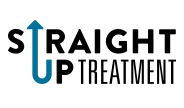Straight Up Guide to Types of Therapy
These guides were born out of Noah and Christine’s frustration with overly complicated and jargon-filled articles, newsletters, books, and therapy websites. Our mission is to create clear and practical guides in order to learn, grow from challenges, and lead more meaningful and impactful lives.
If you go to a western medical doctor with the flu, chances are you will get antibiotics. However, in the world of psychotherapy, things are more complicated. There are a number of different “orientations,” or styles, that view human beings in different ways, and provide different models of how to treat anxiety, depression, and other mental health issues. While there are apparently over 400 different orientations, this article will review a number of the most notable ones, and what their mechanism for change is.
Psychodynamic
This is what therapy is traditionally thought of, deriving from Sigmund Freud, and focusing on the unconscious. The traditional form of this is called psychoanalytic psychotherapy, which involves the patient lying on the couch and free associating. Sessions are two to five times a week for several years. Psychodynamic therapy is the modern adaptation of this form, and occurs roughly once a week. This is a non-directive form of therapy, meaning that there is no predetermined goal or direction within a session. This therapy tends to be focused on the past and how it is showing up in the present. There is a great deal of variety within this orientation with a number of different “schools” such as Object Relations, Ego Psychology, or Self Psychology, but they all come from the same lineage.
Change Mechanism: The unconscious is made conscious, and this insight leads to change. Psychodynamic therapy also relies on “corrective emotional experiences” in which past traumas are healed in session.
Cognitive Behavioral Therapy (CBT)
This is a therapeutic approach that addresses distorted thinking, dysfunctional emotions, and maladaptive behaviors through goal-oriented interventions. The name refers to the integration of cognitive therapy and behavior therapy that CBT practitioners use with their patients. CBT is a directive form of therapy in which the therapist will collaborate with the patient to establish goals and direction for each session. CBT tends to be present-focused, and spends less time than psychodynamic on the past.
Change Mechanism: Since thoughts and behaviors have been learned, they can also be unlearned and modified in treatment.
Acceptance and Commitment Therapy (ACT)
This is a relatively new form of CBT that emphasizes psychological flexibility as the key to mental health. ACT relies on mindfulness and experiential exercises as opposed to the logic and reasoning used often in CBT. Acceptance means not trying to control events, people or internal states. Commitment means taking action toward people or things you value, regardless of how you may feel at the moment. ACT emphasizes behavior change over insight, and learning to live with pain as opposed to trying to control it.
Change Mechanism: By moving towards things you value, and not avoiding difficult feelings, your life becomes more meaningful over time.
Dialectical Behavior Therapy (DBT)
This was developed by Marsha Linehan to treat Borderline personality but has been adopted for more general use. DBT is a skills-based treatment that focuses on four areas: 1) Mindfulness, 2) Distress tolerance, 3) Emotion regulation and 4) Interpersonal effectiveness. Mindfulness refers to the art of observing one’s mind non-judgmentally. Distress tolerance means how to more effectively cope with emotional pain when it arises. Emotion regulation means learning how to identify your feelings and take appropriate actions when they arise. Interpersonal effectiveness means learning how to be assertive, advocate for change, and say “no.” Group and individual session are utilized in DBT, and phone sessions are available when necessary.
Change Mechanism: If you can develop new skills to employ during your most difficult intense emotional moments, your life inevitably will get better.
Exposure and Response Prevention (ERP)
This is a highly specialized form of behavioral therapy in the CBT school that was originally developed to treat phobias and OCD, but is now used across a variety of anxiety disorders. Exposure means gradually moving closer to what you fear or are avoiding – this could be dirt, germs, spiders or heights, or more abstract mistakes, unevenness, or even “bad” thoughts. Response Prevention means that you modify or “prevent” your usual response to these fears, i.e. compulsions or avoidance, and learn to tolerate the discomfort that the exposure brings.
Change Mechanism: If you expose yourself to your greatest fears, and respond in a different way than you are used to, you can overcome them.
Family Systems
This orientation views people primarily through a “systems” lens, meaning as part of a greater system than themselves, usually their family. Systems therapists view individuals as part of a complex series of interlocking parts and relationships that affect each other in various ways. Some Systems therapists prefer to meet with family members individually, while other will meet with the entire family, or some combination. Family systems is often used in conjunction with CBT or more individually-minded orientations.
Change Mechanism: If you change any part of the system, meaning any individual member, then the entire system will have to respond in some way.
These are just a few of the most well-known orientations, but there are many others that are not on this list. It might be helpful to have a discussion with any potential therapist or mental health practitioner and ask what their orientation is, and why they chose that one over the others. It might be helpful to ask how their orientation will show in up treatment.
Christine Izquierdo and Noah Laracy are the co-founders of Straight Up Treatment, an anxiety disorder specialty treatment center. Straight Up Treatment utilizes a variety of cognitive-behavioral approaches to treat anxiety-based conditions such as Obsessive-Compulsive Disorder, Social and Performance Anxiety, Panic Disorder, Depression, and Generalized Anxiety.
You can learn more about them here.
You can read more guides here.






